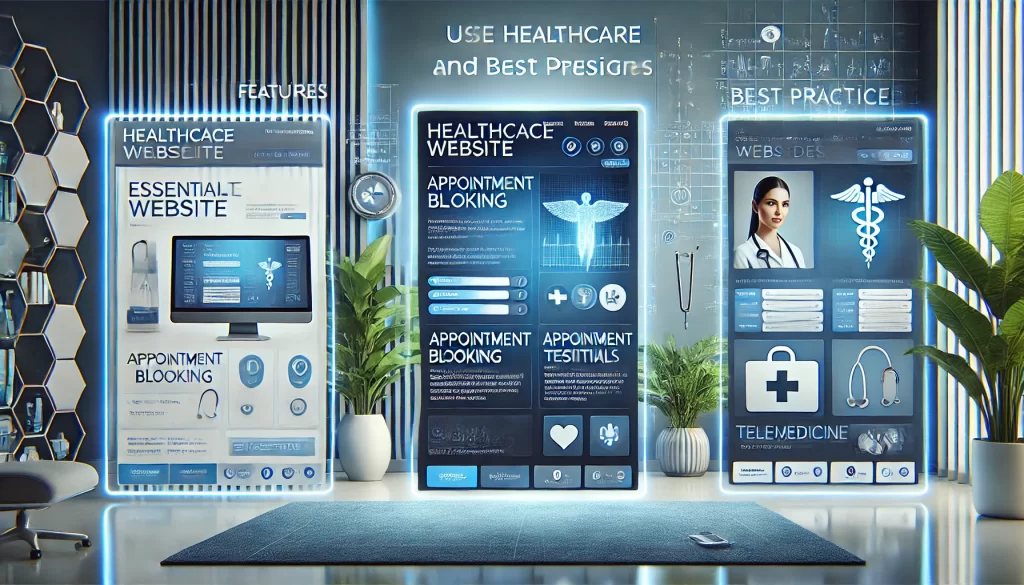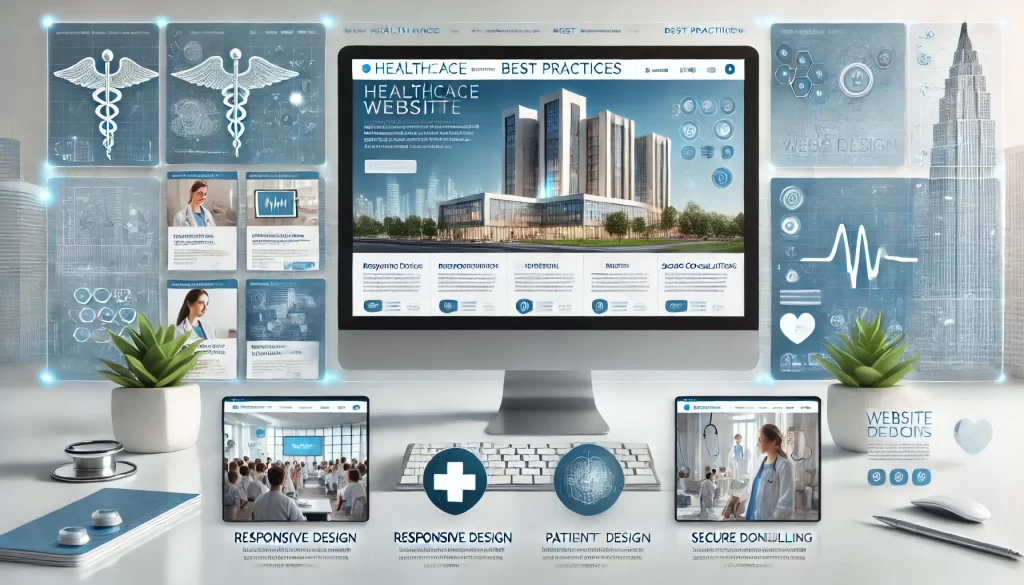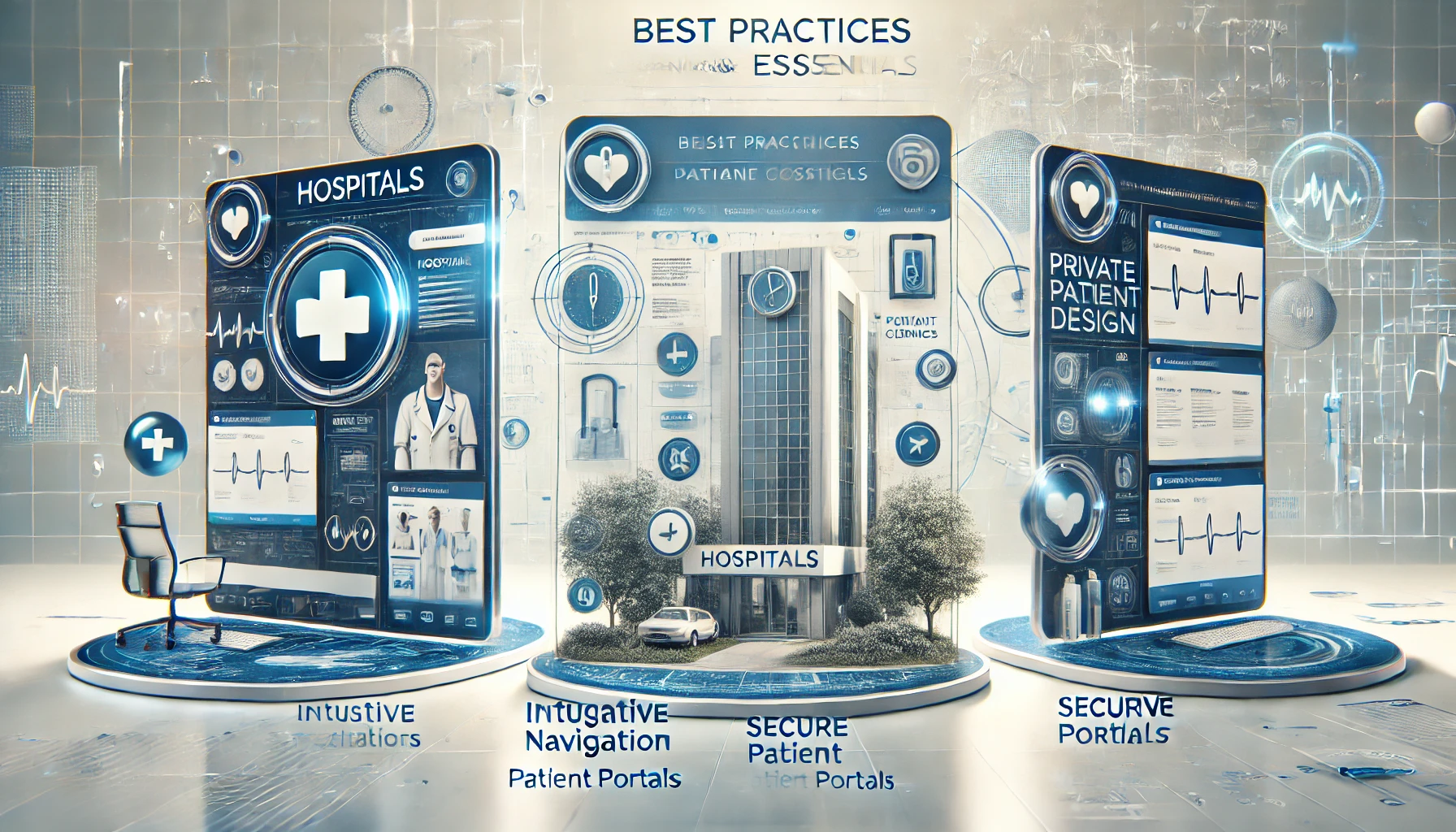Introduction
In today’s healthcare landscape, a website is one of the most crucial assets for professionals and organizations in the health sector. A well-designed healthcare website serves as the first point of contact between a provider and potential patients or clients. Whether you run a healthcare practice, a holistic wellness business, or a specialized healthcare service, your website needs to be functional, informative, and easy to navigate. It must also project authority and trustworthiness, as patients and clients often rely on your online presence to gauge your credibility.
This blog explores the essentials of healthcare website design and outlines the best practices for creating websites for various segments within the healthcare sector, including general healthcare, specialized healthcare, and holistic health. We’ll also dive into the importance of accessibility, trustworthiness, and user-friendly design to ensure that your site performs optimally for both visitors and search engines.

Types of Healthcare Websites
General Healthcare Websites
Understanding the Core Needs of Healthcare Websites
When we talk about general healthcare websites, we’re referring to websites that cater to a wide range of medical services. These include clinics, hospitals, urgent care centers, and general practitioners. The primary goal for these websites is to provide essential information about services, staff, and contact details in a user-friendly manner. Additionally, these websites need to build trust and instill a sense of professionalism.
Related Posts
- Examples of Effective Healthcare Websites
- Additional Resources for Healthcare Website Design
- Best Performing Healthcare Websites by Category
Examples of General Healthcare Websites
General healthcare websites need to focus on presenting clear, concise information to visitors. Examples of such sites include:
- Healthcare Websites for Hospitals: These often feature detailed service pages, doctor directories, appointment booking systems, and easy-to-navigate content for patients seeking specific medical treatments.
- Health and Wellness Websites: These can include sites for general wellness clinics, nutritionists, and fitness centers. While the focus is more on lifestyle and preventative care, trustworthiness is just as important.
- Medical Professionals’ Websites: These sites are designed to showcase an individual doctor’s credentials, services, and patient testimonials.
Importance of Accessibility and Trustworthiness
Accessibility is vital for healthcare websites. They must be inclusive, allowing people with disabilities to navigate the site easily. Adhering to ADA compliance guidelines ensures that everyone, including those with visual, auditory, or physical impairments, can access essential information. This is particularly important in healthcare, where users might be seeking urgent medical information or services.
Trust is another crucial element. A healthcare website should offer the following to help build trust with users:
- Clear Contact Information: Visitors should be able to quickly find your phone number, location, and ways to get in touch.
- Client Testimonials and Reviews: Displaying patient stories or feedback helps establish credibility and encourage new visitors to trust your services.
- Professional Content: Content should be written by experts, use medical terminology where necessary, and be free of spelling or factual errors.
Specialized Healthcare Websites
Targeted Content for Niche Audiences
Specialized healthcare websites serve a unique, targeted audience. These sites focus on offering services to specific groups or conditions, and their design needs to reflect that specialization.
Examples of Specialized Healthcare Websites
- Mental Health Professionals Websites: Websites dedicated to therapists, counselors, or psychiatric practices need to convey warmth and empathy while providing easy navigation for those seeking mental health support. These sites should emphasize confidentiality, patient care, and support services.
- Holistic Health Companies: Holistic health websites often focus on alternative treatment methods like acupuncture, massage therapy, or natural medicine. These websites need to be visually inviting, calming, and educational.
- Healthcare Websites for Professionals: These are websites designed for other professionals in the healthcare industry, such as physical therapists, chiropractors, or specialized surgeons. These sites must showcase specialized services, certifications, and expert knowledge.
Specialized Design Considerations
For specialized healthcare websites, personalization is key. Visitors should immediately understand that they are in the right place for their specific needs. Consider using:
- Personalized Landing Pages: These could be designed for specific conditions or treatments to make navigation more intuitive for users.
- Clear Service Descriptions: Each service should be outlined in detail, with options to schedule appointments or consultations.
- Visual Elements That Reflect Specialization: Images, icons, and colors should reflect the niche focus of the website. For instance, mental health websites might use calm, neutral colors to foster a sense of comfort.
Holistic Health Websites
Catering to the Wellness and Alternative Health Community
Holistic health websites are designed for practitioners and companies that offer alternative or natural health treatments. These might include services such as acupuncture, herbal remedies, holistic nutrition, and wellness coaching. The design of these websites must appeal to people seeking more natural approaches to health, with content that educates, inspires, and motivates.
Examples of Holistic Health Websites
- Holistic Health and Wellness Centers: These websites often promote a variety of services, from yoga and meditation to nutrition counseling and alternative medicine.
- Holistic Health Online Stores: Websites selling natural health products need to focus on creating a seamless shopping experience, with detailed product descriptions, ingredient transparency, and educational blog content on holistic health.
Related Posts
- Social Media Strategies for Holistic Health Websites
- Paid Advertising & Retargeting for Healthcare Websites
- Online Courses and Resources
Design Considerations for Wellness and Alternative Health Practitioners
When designing holistic health websites, it’s important to create an atmosphere that reflects the values of the wellness community. Here are key design tips:
- Soothing Colors and Aesthetics: Soft colors like green, lavender, and light blue promote calmness and healing. Avoid harsh or overly bright colors that may distract or overwhelm visitors.
- Educational Content: Provide in-depth articles, video tutorials, or eBooks that help visitors understand the benefits of holistic treatments. This positions your website as a reliable resource for information.
- Client Testimonials and Success Stories: Share patient or client testimonials showcasing the success of holistic treatments. Real-life stories are powerful tools to build trust and convert visitors into clients.
- User-Friendly Design: Ensure that the navigation is clear and straightforward. Holistic health websites often focus on providing valuable resources, but they must still be easy to use, especially for individuals who may not be tech-savvy.

Healthcare Website Design Best Practices
Mobile Optimization is Crucial
Many users access healthcare websites on their smartphones. With mobile-first indexing being a priority for Google, your site must perform well on mobile devices. Ensure that all elements, from text to images, are properly optimized for small screens and touch navigation.
Fast Loading Times for Better UX
In healthcare, where time is often of the essence, slow loading times can be frustrating and may lead to higher bounce rates. Optimize images, reduce heavy scripts, and implement caching strategies to improve loading times.
Easy Navigation and Clear CTAs
A clean, simple navigation system is a must. Users should be able to find what they need quickly, whether it’s information about a specific service or booking an appointment. Call-to-actions (CTAs) should be prominently placed throughout the website, encouraging users to take the next step.
ADA Compliance for Accessibility
Ensuring your healthcare website is ADA-compliant (Americans with Disabilities Act) is essential. This includes adding alt text for images, making sure the site is navigable with a keyboard, and using readable fonts with sufficient contrast.
Content Accuracy and Medical Authority
For a healthcare website to be trusted, its content must be written by professionals or verified by experts. Providing accurate, up-to-date medical information is crucial. Incorporating sources and citations, such as research articles, will add credibility.
FAQs
What is the importance of healthcare website design?
Healthcare website design impacts trust, user experience, and conversion rates. A well-designed site builds credibility and allows for easy navigation, booking, and information access.
How can I make my healthcare website more accessible?
Focus on ADA compliance, mobile optimization, and ensuring that your website’s content is easily readable and navigable by people with disabilities.
What design elements should I consider for holistic health websites?
To make the site inviting and informative, use calming colors, engaging imagery, and educational content. Highlighting testimonials and offering easy ways to book services can also increase trust.
How do I ensure my healthcare website is trustworthy?
Provide accurate, expert-backed content, display testimonials, and ensure the site is professional, accessible, and secure.
Key Takeaways
A healthcare website design is critical in establishing trust and authority for healthcare professionals. Whether your website caters to general healthcare, specialized services, or holistic health, understanding your audience and implementing user-friendly design principles is key. Focus on clear content, mobile optimization, trust-building elements, and accessibility to create a website that attracts and retains visitors.
- A well-designed healthcare website is a reflection of professionalism and trust.
- Mobile optimization and fast loading times are essential for user retention.
- ADA compliance and accessibility must be prioritized for inclusivity.
- Specialized websites need personalized design, content, and a clear path for user engagement.
